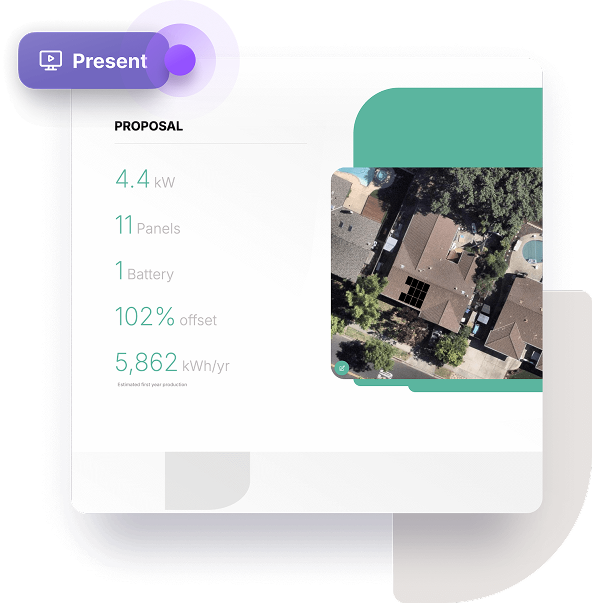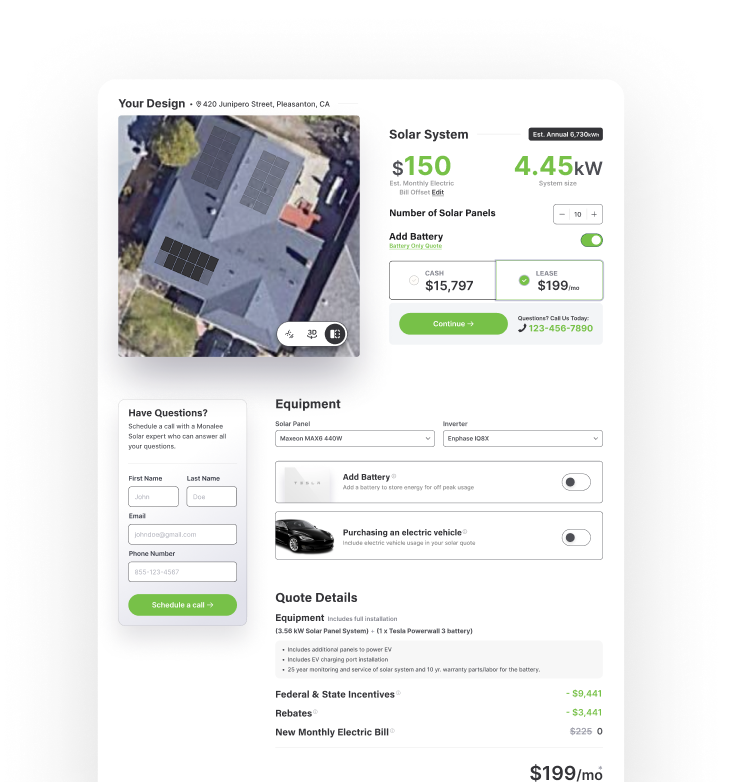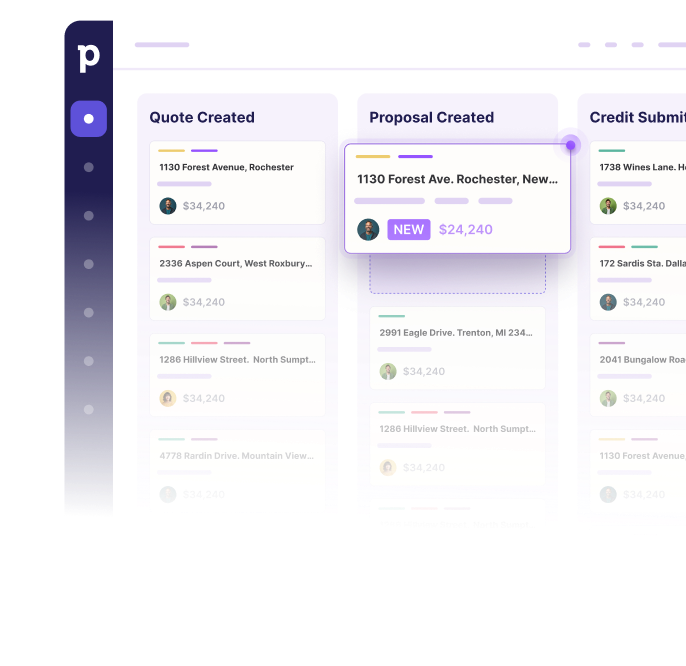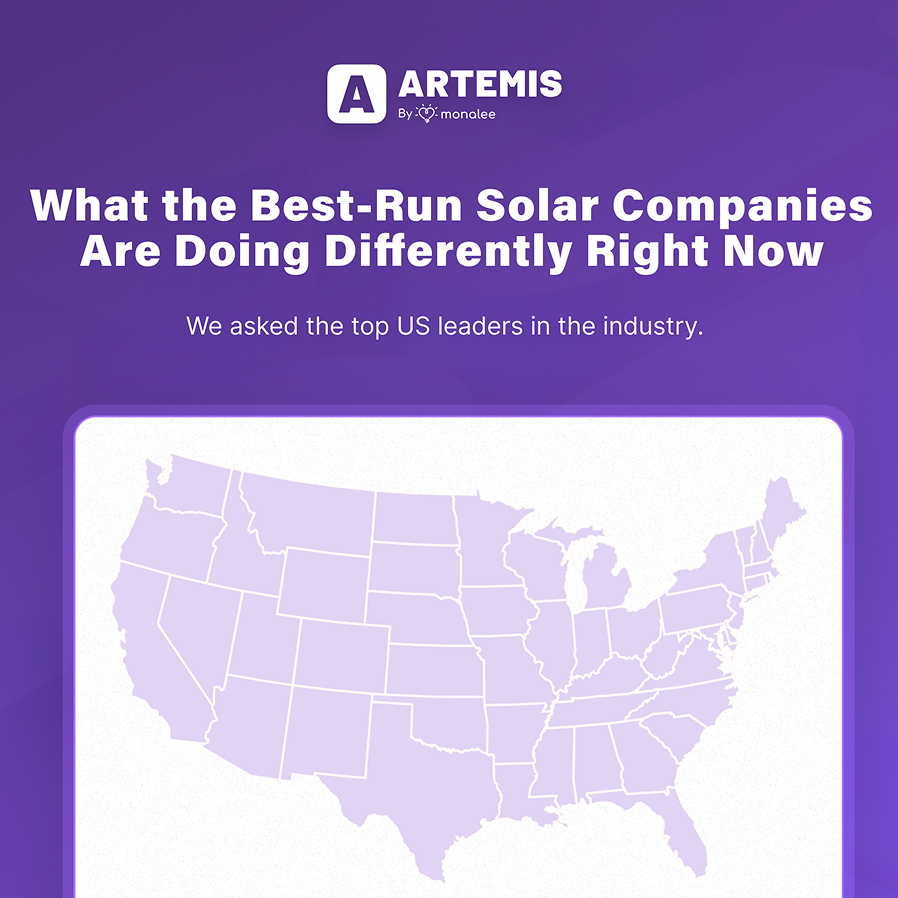The solar industry is shifting under our feet.
Net metering is evolving. The ITC is on a defined path to sunset. Dealer fees are climbing. Permitting backlogs are squeezing install timelines. Financing is getting more complex — and customer trust, more fragile.
And yet, in the middle of all this, some solar companies are thriving.
They’re expanding into new markets, reducing overhead, and closing deals faster than ever before. Their margins are healthier, their teams are leaner, and their sales cycles are accelerating.
What are they doing differently?
As we work with leadership teams across the U.S., a clear pattern is emerging. The best-run solar companies in 2025 aren’t just using better tools. They’re making better strategic decisions — ones that prioritize speed, integration, and operational control.
Let’s break down the biggest moves they’re making right now.

1. Speed Has Become the Strategic Lever
The industry used to reward thoroughness. Today, it rewards responsiveness.
The most successful solar orgs have compressed the sales cycle — from lead capture to signed contract — to a matter of hours, not days. They’re removing friction points that used to be considered “just the way it is”: design queues, multi-day site audits, and call-backs for pricing.
The shift isn’t about cutting corners. It’s about operational responsiveness — delivering what the homeowner wants, when they want it, with no handoffs or delays.

YOUR QUOTE
2. The Website Is No Longer Just Marketing — It’s the Sales Floor
Historically, a solar company’s website was just a lead form. Fill it out, wait for a call, and maybe get a quote a few days later.
The best-run solar companies in 2025 treat their website like a high-performance storefront — not just capturing leads, but qualifying them, quoting them, and moving them to decision in real time. They’ve brought the e-commerce experience to solar: interactive, instant, and customer-controlled.
Why? Because modern buyers expect it. If Amazon, Rocket Mortgage, and Carvana can deliver upfront pricing and instant customization, homeowners expect the same from solar.

YOUR QUOTE
3. They’ve Merged Sales, Ops, and Finance Into One Cohesive Flow
The most efficient companies we see today are reducing tools, consolidating data, and aligning sales and operations into a unified workflow. They’ve built systems where a sales rep can generate a quote, update equipment, verify eligibility, and push the deal through — all without waiting on design, finance, or back-office bottlenecks.
Finance, in particular, is no longer a final step. It’s embedded early, visible side-by-side with system design, and increasingly automated.

YOUR QUOTE
4. Adaptation Is a Weekly Habit, Not a Quarterly Project
What sets these companies apart isn’t just what they’ve built — it’s how they keep evolving.
Top solar CEOs aren’t sitting on fixed org charts or static tools. They’re adjusting to market shifts in real time: updating financing structures when dealer fees change, re-prioritizing states when policy turns, launching new flows when sales teams hit friction.
Their ops teams don’t ask, “Can we do this?”
They ask, “How fast can we test it?”
YOUR QUOTE
Conclusion: The Winners Aren’t Just Selling Solar — They’re Rebuilding How It’s Sold
This isn’t just about having better reps or slicker tools. It’s about owning the full stack of operations and putting the customer experience at the center of every decision.
If the last decade of solar rewarded expansion, the next one will reward adaptability.






